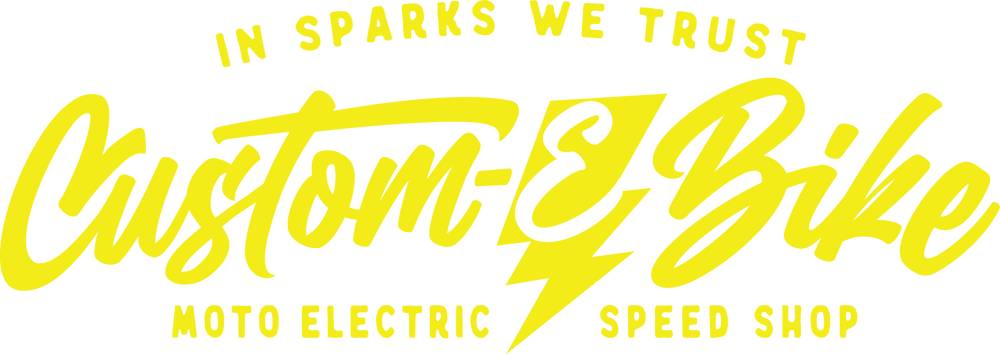
So You Want to Hot Rod Your Super73 - Part 1 (The Rules)

The most frequent question we get asked in selling ebikes on our sister site, Jack North Bikes, is “what is the top speed?” The most frequent question we see noobs asking on our FB group, Super73modsandcustombuilds is: “how can I make my bike go faster?” In fact, newbies who have just ordered a bike and not even ridden it yet often ask this in their first or second post. This 3-part series explores the rules, the pros and cons, and the how to’s.

The federal 750-Watt limit law.
First, the answer to the question “how fast” is that any stock bike in the U.S. is limited by federal law to a 750 watt motor and cannot go faster than 20 miles per hour on throttle alone, or 28 with pedal assist. As a result, the vast majority of ebikes use a 750w motor or less. Under federal law, an electric bicycle is referred to as a “low-speed electric bicycle,” which is defined as “a two- or three-wheeled vehicle with fully operable pedals and an electric motor of less than 750 watts (1 h.p.), whose maximum speed on a paved level surface, when powered solely by such a motor while ridden by an operator who weighs 170 pounds, is less than 20 mph.” See Public Law 107-319; 15 U.S.C. § 2085.
This law, enacted in 2002, established that electric bicycles are regulated as consumer products under the Consumer Product Safety Act and would be subject to the bicycle safety standards that apply to ordinary bicycles. See 16 C.F.R. Part 1512. The Consumer Product Safety Commission enforces this law. As a practical matter, Public Law 107-319 ensures that electric bicycles are designed, manufactured, and tested like traditional bicycles for the purposes of consumer product safety law. If an electric bike stays within these limits, it is not classified as a “motor vehicle” for the purposes of federal law, and is not subject to National Highway Traffic Safety Administration vehicle standards.
The 3-Class System.
After the enactment of the federal law in 2002, two interest groups—PeopleForBikes and the Bicycle Product Suppliers Association (BPSA)—have continued to guide and shape the rules around e-bikes at the state level. BPSA proposed the following classification system which has been adopted by various state legislatures, including California:

For all classes, the maximum power output is 750 watts (as a general rule, 750 watts is equivalent to 1 h.p.), and manufacturers and distributors of electric bicycles would be required to apply a class identification label to each electric bicycle.
Most American bike manufacturers voluntarily complied with the BPSA 3-class system and put prominent stickers on their e-bikes showing what class it belonged to. Super73’s S-1 and Z-1 bikes displayed the sticker in accordance with California law. The Michael Blast Outsider, imported from an Australia-based company, does not display the sticker, although with a 500w or 750w motor, it is legally an e-bike in the U.S.
“Out of Class Electric Vehicles”
To recap: an electric bike remaining within the CPSC specifications is subject to the consumer product regulations for bicycles. But commercially manufactured e-bikes exceeding these power and speed limits are regulated by the federal DOT and NHTSA as motor vehicles and must meet additional safety requirements.
Super73’s new bikes released in 2020 (the S-2 and R Series) feature a 2,000 watt motor and can reach speeds above 28 mph. Super 73 calls the products “electric motorbikes.” To quote: “The Super73-S2 is a high performance street-legal electric motorbike that does not require a license or registration.”
The R-Series Users Manual says:
Each R-Series bike comes programmed in the Class-2 ride mode, which allows for throttle operation and pedal-assist riding up to 20mph. This allows the R-Series to be legally ridden on most bike paths without a license, insurance, or registration.
Similarly, the ONYX bike, from Sweden, has a website front page that advertises a speed of 60 mph and 8hp from a 5,400 watt motor. However, the website states in the FAQ section:
Do I need to register this bike?
ONYX RCR is limited to a top speed of 20 mph and 750 watt to comply with federal electric bike regulations. ONYX RCR classifications vary by state and local laws. Check in with your local DMV. You can read more about Federal E-Bike Legislation here.
The next thing in the ONYX FAQ states that you can register the bike as a moped in California. A bit confusing...
One could argue that these new “fast” e-bikes fall outside of all of the current rules, and thus should be classified as motor vehicles rather than e-bikes. There is no such thing as a “street-legal electric motorbike” that does not require a license. Under federal law, a commercially-manufactured electric bike can either be a 750-watt electric bike regulated like a bicycle, or something with more that 750watts and that is a motor vehicle, subject to NTSF and ADOT and requiring a license. When an electric bike does not fit within the 3-class system, BPSA refers to such vehicles as “Out of Class Electric Vehicles.” They warn that such vehicles increase the likelihood of conflict between ebike users and everyone else on the road (cars, bikes, pedestrians) and worry that this may result in a backlash and undo progress they have made.
So – them’s the rules. It is still a little bit wild west right now. Next, let’s talk about the pros and cons of bending or breaking the rules by building a fast ebike yourself.
RESOURCES
https://peopleforbikes.org/our-work/e-bikes/policies-and-laws/
https://en.wikipedia.org/wiki/Electric_bicycle_laws#Federal_laws_and_regulations_on_sales
